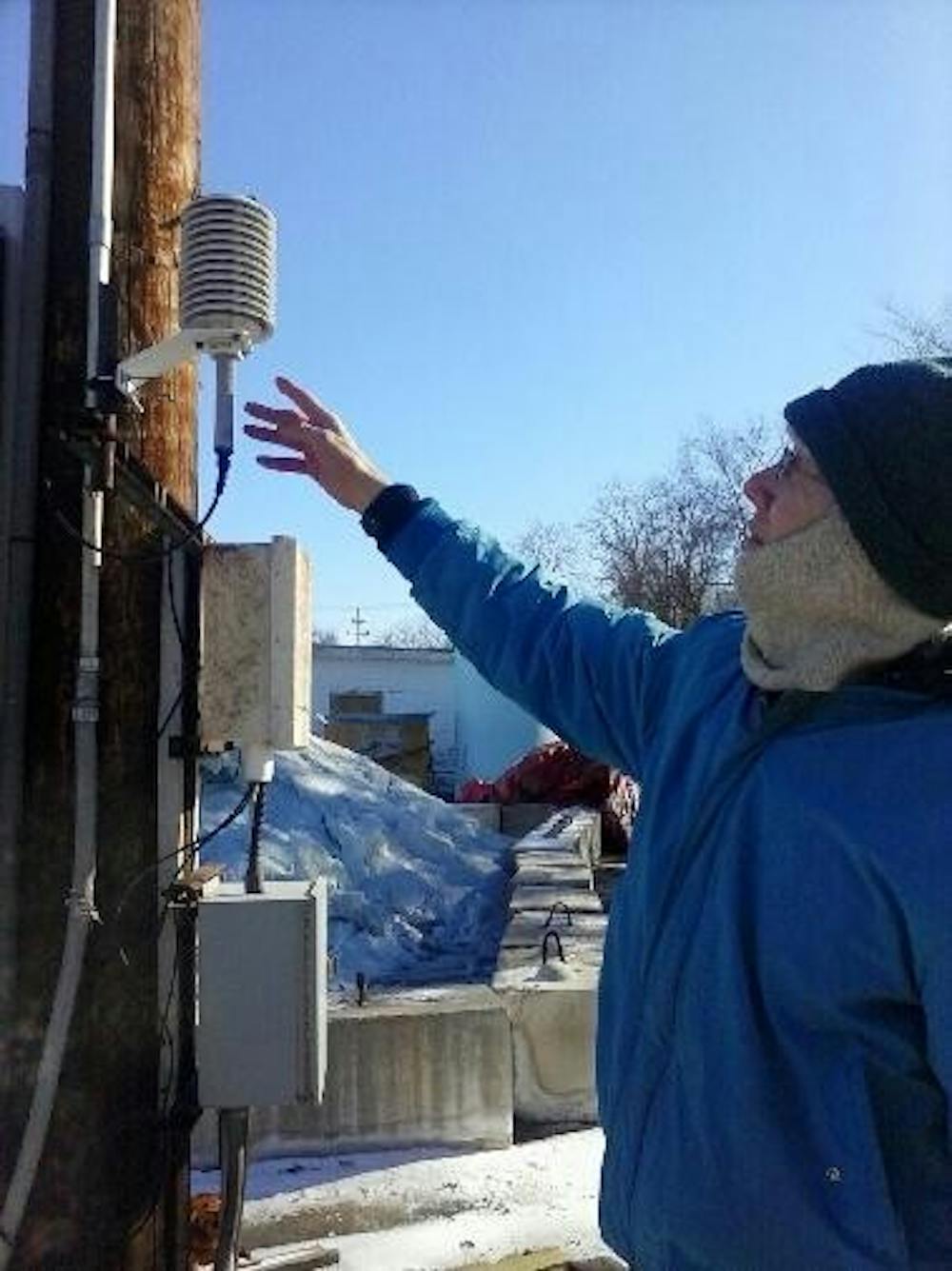While Sunday’s 46 degree weather was a break from the freezing, brisk temperatures that have ravaged two-thirds of the United States, including the Midwest for the past month, Monday marked the cold’s return.
Monday’s high was 11 degrees, according to the National Weather Service, with a night wind chill as low as 23 degrees below.
Wind Chill Advisories or warnings were in effect for most of the state of Indiana, according to the National Weather Service.
While IU Bloomington’s campus closed during winter break due to severe weather, recent temperatures have not been enough to warrant a closing.
IU South Bend and IU Northwest were both closed Monday due to severe weather.
Freshman Eva Timm said the chilly weather has been stressful for her.
“It’s really horrible coming to class half crying because it’s so cold outside,” she said.
IU Physical Plant Electronics Technician Greg Gember stood outside next to the Eigenmann Hall parking lot Monday, without gloves.
His hands were red. He talked about how easy it was to get frostbite with a wind chill so low. He said people can get frostbite if it is exposed to the wind for just 10 minutes under these extreme wind chill values.
“It’s getting there,” Gember said about his exposed hands. “That’s why I keep putting them in my pockets. I keep the wind off, keep most of the exposed flesh from the wind.”
Gember said he’s been interested in learning about the weather ever since he was in grade school when he witnessed the Palm Sunday tornado outbreak of 1965.
According to an IU Physical Plant newsletter, Gembler attended Purdue University for a semester, enlisted in the Air Force, and received a degree in electronics at Ivy Tech Community College.
In the early 1980s, he and others installed the first Doppler weather radar equipments for television stations like WISH-TV Channel 8 and WRTV — Channel Six as well as
for television stations around the country.
Gember is known as the “Weather Man” at the IU Physical Plant. In 2001, he helped
create the weather station for IU because the Physical Plant wanted more data than just temperature and rain measurements.
The weather station, which is housed in the Campus Division building on East 10th Street, is a data system that measures wind speed, direction and humidity as well as temperature and precipitation.
There’s a box known as the data logger which sends the signals through sensors.
“Every five minutes it takes a temperature reading and then it stores it and sends to the computer in our shop,” Gember said. “Then, our server puts it out on the
web.”
Gember pointed to a small device on the middle of a pole with spinning propellers that measures wind speed and direction.
“It’s like a plane without the wings on it,” Gember said. “Faster that propeller turns, the faster the wind speed. Obviously, the wind’s direction is where it’s pointing. That is also feeding signals. The wind, speed and temperature, that combination gives you the wind chill.”
Wind chill is otherwise known as the “feels like” temperature, and is responsible for the immediate sting of coldness that hits students when they venture outside.
As Gember walked away from checking the weather station and towards the Campus Division building, Mike Girvin, the Campus Division manager, told him that they are running out of salt, which the IU Physical Plant uses to dissolved potentially
dangerous levels of ice on the ground.
The only salt left to spread around campus was a large heap next to the weather station, which Girvin said is not a lot.
He said they don’t know when they will get any more salt.
“The state of Indiana is out,” Girvin said. “Yeah, it’s a big problem across the country,
everybody is out of salt. We are hoping to get some from Brookville later on in the week, but it’s a challenge right now.”
For now, they are using Brine, which is a salt and water solution, mixed to make a liquid. It is sprayed on the ground with the salt to dissolve black ice from the freezing ground.
On campus, Chinedu Amaefula, a graduate student, wore a scarf and a long black
coat to campus Monday. He said he was in Ethiopia while two-thirds of the country was enduring the severe winter storm that lasted for a week earlier this month.
He said it was 80 degrees in Ethiopia.
“As you can see, I’m cold,” Amaefula said. “I was listening and watching about the artic blast in the north over there on CNN and Al Jazeera.”
Amaefula said he is staying hydrated and eating proper foods while he is bracing the storm. However, he said he noticed some people weren’t as equipped as he was.
“I see a lot of people walking around campus trying to look cute and trying to keep up with the status quo,” Amaefula said. “They’re sacrificing their sanity of keeping warm.”
Follow reporter Aaricka Washington on Twitter @AarickaWash.
Students, IU staff cope with extreme cold

Get stories like this in your inbox
Subscribe





